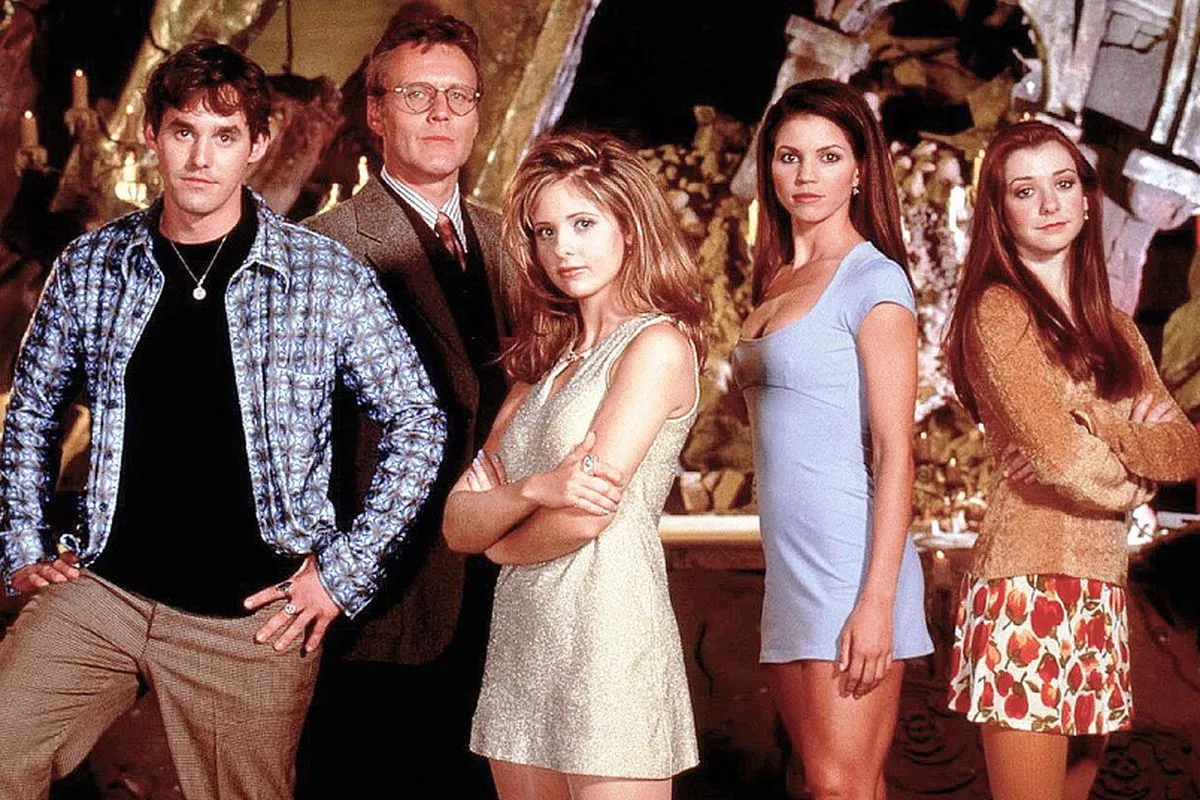The Enduring Legacy of Buffy the Vampire Slayer
23 years ago today, BtVS premiered on the small screen.


(20th Century Fox)
23 years ago today, the iconic supernatural drama series Buffy the Vampire Slayer premiered on the WB network. It was a scrappy little show based on the 1992 horror comedy film that didn’t make much of an impression critically or commercially. Who could have possibly known that this goofy teen show would go on to be one of the most influential and beloved series of the 90s and early 2000s?
Kids today may not remember a time before Peak TV, before personalized content flooded our phones, televisions, and laptops. It wasn’t until the launch of premium cable, where channels like HBO raised the bar with flagship series like Sex and the City and The Sopranos.
Before television became art, it was entertainment. The medium was often derided as visual junk food, a haven for broad crowd-pleasing sitcoms and procedural dramas. That’s not to say these shows weren’t good. Classics like M*A*S*H and All in the Family delivered resonant messages and richly drawn characters. But television was a disposable entity and it was treated as such.
When television is disposable, it relies on a reset at the end of every episode, so if you missed episodes here or there, you could simply jump back into the series without having missed anything important. It’s the basis for most procedural shows and sitcoms to this day: after all, you can watch an episode from season one or season 18 of Law & Order and still be able to follow along.
Buffy changed all of this with the invention of a season-long story arc. While its earlier seasons relied on a monster-of-the-week format, there would be an over-arching story thread, a Big Bad that would recur and wreak havoc throughout the season. These Big Bads (the Master, Angelus, Mayor Wilkins, etc.) were given a full season to develop into three-dimensional villains, which helped to raise the dramatic stakes (no pun intended) of the series.
It’s a given that now we have overarching, season-long storylines. But BtVS did it first and set the template that countless shows would soon follow. The series would continue to break the mold in all sorts of ways. It was a hybrid series, delivering drama, comedy, and horror in a high school setting. Its modus operandi was hinged on simple yet powerful metaphor: high school is hell.
Buffy also wasn’t afraid to give us morally compromised heroes and villains. It killed off fan favorites and turned beloved good guys into murderers. No one was safe, and everyone made mistakes. But perhaps most importantly, BtVS invented a new kind of female heroine.
Buffy Summers was your prototypical “strong female character”. She was beautiful, she was strong, and she was good. But it wasn’t her super strength or her birthright that made her a hero. It was her moral compass, her ability to do the right thing, no matter how many people it hurts or how much it isolated her from her peers.
Sometimes doing the right thing meant pain and suffering. Sometimes it meant rejecting the establishment, be it school, the law, or the Watcher’s Council. Buffy struggled to be a good Slayer, a daughter, and a friend. But it was her struggle that made her universally relatable.
Today’s television landscape is filled with morally grey characters and complex anti-heroes, most of whom are men. But Buffy Summers did it first, and arguably best.
What are your favorite BtVS memories? Does the show still hold up for you?
Want more stories like this? Become a subscriber and support the site!
—The Mary Sue has a strict comment policy that forbids, but is not limited to, personal insults toward anyone, hate speech, and trolling.—
Have a tip we should know? [email protected]
